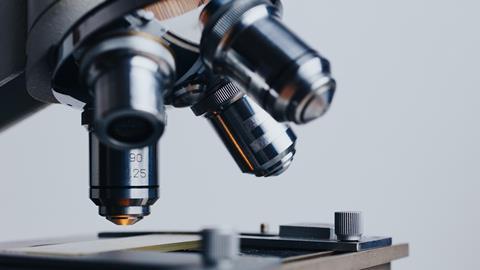Recent advances in the field of phage research have pushed forward current phage technologies, going beyond bacterial control using whole phage, to areas including biocontrol utilising phage-derived enzybiotics, diagnostics, novel drug-delivery systems, bionanotechnology and diagnostics.
Antibacterials and biocontrol
In addition to phage being used to combat pathogenic bacteria in infected humans, phage are also useful tools within the food industry. Phage are already in use to eliminate pathogenic bacteria in foods, with Listex™ being founded in 2012 and used to target a number of important food pathogens such as Listeria monocytogenes, Escherichia coli, and Salmonella spp. Alternatives to whole-phage bacterial control include engineered phages that deliver CRISPR-Cas nucleases into antibiotic-resistant cells and knock out antibiotic-resistance genes, rendering resistant cells antibiotic-sensitive.
Bacterial diagnostics
Phage virions and their encoded proteins can also be useful for the detection and specific identification of bacteria. The simplest of these is where a standard number of specific phages are incubated with a food material or other test sample. If the bacterial target is present and viable, detectable phage numbers will increase through amplification on the pathogen. In addition to traditional plaque and culture-based assays, molecular phage-based methods have allowed rapid diagnostics to be developed. In the case of Yersinia pestis, Sergueev et al. have developed a quantitative real-time PCR technique to detect an increase in phage DNA if the bacterium is present.
Reporter phage can also detect the presence of bacteria without needing to produce progeny phage and lyse the host cell. In this case, phage genomes are modified to carry bioluminescence or fluorescence genes that the phage alone cannot express. Upon injection of the phage DNA into its host, active bioluminescent or fluorescent proteins are synthesised using host bacterial machinery, facilitating visual detection.
Phage receptor-binding proteins (RBPs) can also be used in bacterial detection and identification. A simple glass-slide agglutination test for Campylobacter was developed by fusing the receptor-binding domain of the RBP in a Campylobacter phage to green fluorescent protein. Campylobacter jejuni and Campylobacter coli could then be detected using fluorescence microscopy. Because of the wide diversity of phages, a plentiful source of host-specific proteins is available to create simple identification tests such as the agglutination assay mentioned above. Both RBPs and whole phage can be bound to a biosensor surface for bacterial detection, allowing for high specificity. Whole phage are more difficult to attach to a surface, whereas RBPs can be recombinantly produced and have better stability than antibodies.
Phage endolysins can be used in an additional capacity to detection, as endolysins can be used instead of the more traditional reagents for DNA extractions. Staphylococcal endolysin ClyH degrades the peptidoglycan of Staphylococcus aureus more rapidly than lysostaphin, decreasing sample preparation time for real-time PCR of DNA. Another method of detection is phage display, whereby phage are genetically modified to carry a foreign peptide on their surface. Lee et al. created a phage detection system using phage display where the phage displayed two different peptides: one with specificity to a target protein and the other with an affinity to gold nanoparticles. Through this method, they could detect as few as 25 femtomoles of their target antigen by measuring the UV absorbance of the phage. Phage display techniques have been incorporated into systems capable of real-time detection of bacteria and endospores, through the use of display peptides that are capable of binding to a magnetoelastic resonator.
Drug discovery and phage-based drug-delivery systems
Since the advent of phage display in 1985 by Nobel Prize laureate George Smith, phage have been used to identify receptor–ligand interactions in numerous infectious diseases and cancers, leading to drug discovery and aiding vaccine design. Phage display allows modification of phage into nanocarrier vehicles for chemotherapy through attachment of a drug molecule to the surface of the phage. Phage displaying therapeutic peptides could cross the blood–brain barrier and have the potential to treat diseases such as Parkinson’s and Alzheimer’s. Cancer cells that express particular molecules can be targeted by phage with an affinity for these specific cell receptors. This allows us to exploit phage beyond drug-delivery systems, to allow for target detection by phage display reporter molecules, or detection of bound phage DNA using real-time PCR.
Empty phage capsids are being utilised as carriers containing molecules such as therapeutic compounds, RNA and peptides. Capsids and virus-like particles can be modified to present ligands on their surface, to deliver RNA-guided endonucleases to specific cell types for in situ genome editing. Using phage as nanocarriers for cancer treatment through delivering chemotherapeutic drugs allows the half-life of drugs to be extended and keeps the toxicity of the drug contained to the site of interest, reducing the damage caused to body tissues.
Biotechnology
Genetically modified filamentous phage have even been utilised in the field of material synthesis to construct films and nanowires for semiconductors, piezoelectric energy generation and used for their photo-response properties. These materials can be used for catalysts and batteries; the M13 phage was used to produce nanowires for scaffolding to guide cell growth for the formation of human tissue.
Phage-derived enzymes are being purposed for novel techniques in the biotechnology field: RNA polymerase and ribonuclease H have been used to develop in vitro genetic circuits with future potential applications, to be used in nanodevices and to regulate processes within artificial cells. Recombinase enzymes are extending the memory capacity of these circuits to be used in construction.
Summary
This commentary provides a snapshot of the increasing diversity of phage research in recent years and shows that it is advancing rapidly and that new applications are being reported frequently. Since the discovery of phage a century ago, research has diversified from applying these agents to treat bacterial infections, to a broad range of useful functions including biocontrol, diagnostics, drug discovery and drug delivery, as well as several applications in nanomedicine.








No comments yet